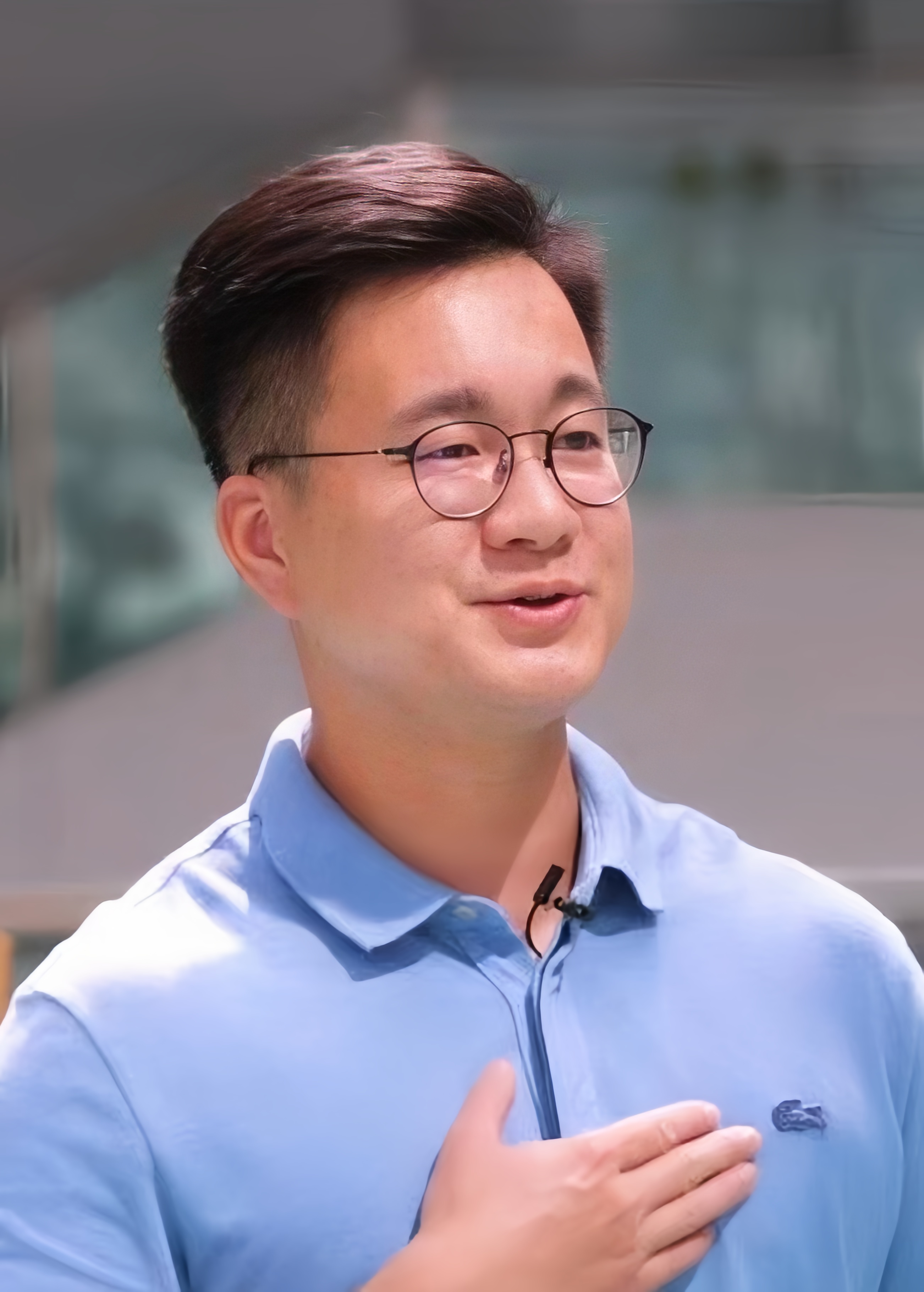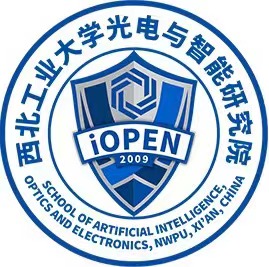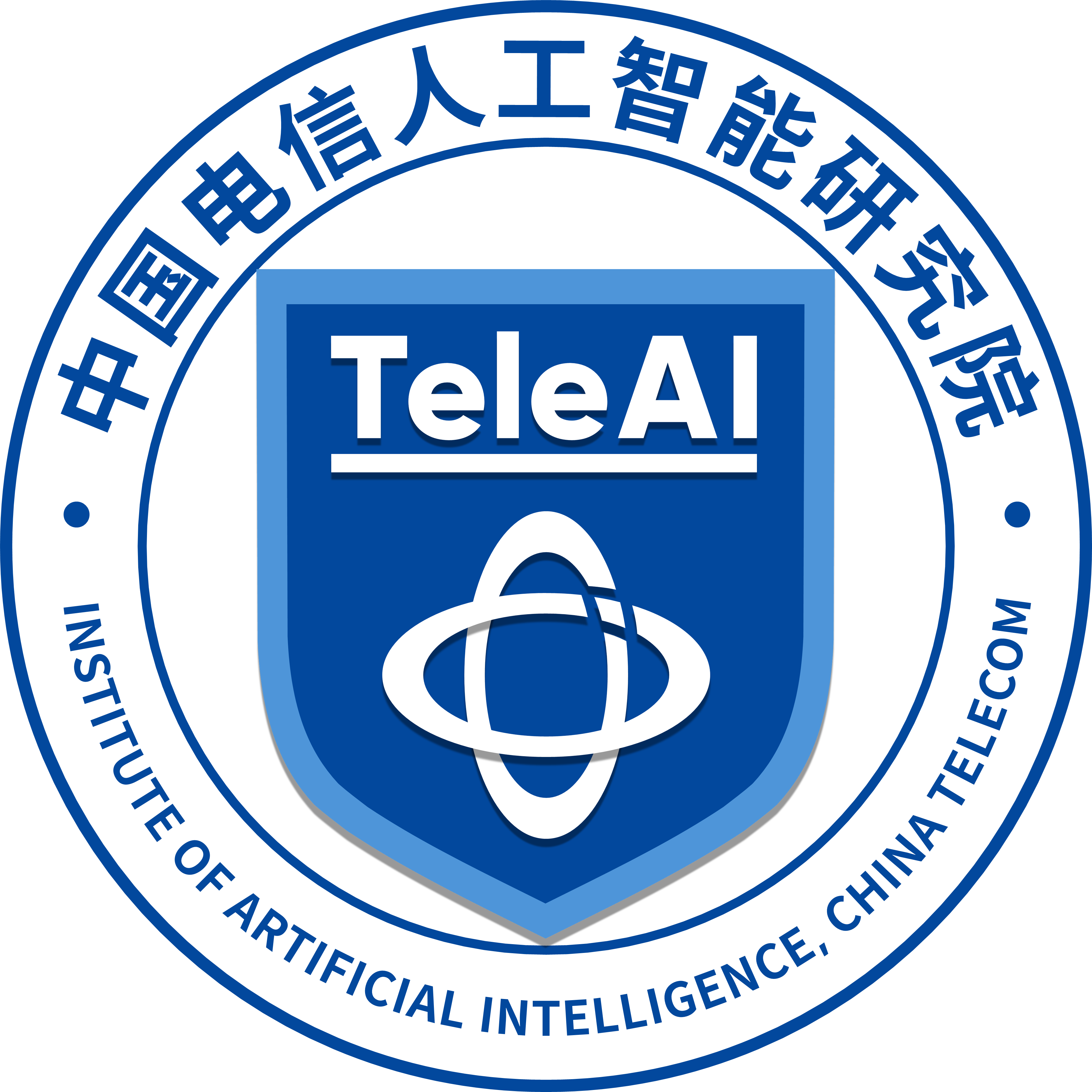
Jian ZHAO 赵健
Leader of Evolutionary Vision+x Oriented Learning (EVOL) Lab & Principal Research Scientist @ TeleAI of China Telecom (中国电信人工智能研究院)
Researcher & Ph.D. Supervisor @ School of Artificial Intelligence, Optics and Electronics (iOPEN) | Northwestern Polytechnical University (NWPU), Xi'an Shanxi, P.R. China
Office: 11 Dongzhimen South Street, Dongcheng District, Beijing, China 100027
Phone: (86) 15313525501
Email: zhaoj90 (at) chinatelecom (dot) cn OR jian_zhao (at) nwpu (dot) edu (dot) cn OR zhaojian90 (at) u (dot) nus (dot) edu OR zhaoj08 (at) pcl (dot) ac (dot) cn
Prospective Students : Contact me.




Research Interests
My research interests include AI Governance, and Vicinagearth Security:
- AI Governance: AI safety and security; multidimensional evaluation benchmarks; AI ethics, etc.
- Vicinagearth Security: perception and understanding of visual targets under unconstrained conditions, etc.
More details can be found here.
News
-
[ PAPER ]05 Jul 2025, Two papers (one demo track) are accepted to ACM MM 2025, congrats to Runqi Wang, and Wei Cai!
-
[ ACTIVITY ]28 Jun 2025, Will give a talk "Anti-UAV: Intelligent Sensing of Low, Slow, and Small Targets in Complex Scenarios" on the 1st CSIG Workshop on Frontier Technologies and Industrial Applications of Artificial Intelligence.
-
[ PAPER ]09 Jun 2025, One paper is accepted to Pattern Recognition, congrats to Jiazheng Xing, and Chao Xu!
-
[ ACTIVITY ]07 Jun 2025, Will co-organize the Multimodal Cognitive Computing Workshop with VALSE 2025.
-
[ ACTIVITY ]07 Jun 2025, Will give a talk "Anti-UAV: Intelligent Sensing of Low, Slow, and Small Targets in Complex Scenarios" on the Low-altitude Intelligent Sensing and Understanding Workshop with VALSE 2025.
-
[ PAPER ]03 Jun 2025, One paper is accepted to Pattern Recognition, congrats to Xiaoguang Tu!
-
[ PAPER ]28 May 2025, One paper is accepted to Pattern Recognition, congrats to Chao Xu!
-
[ AWARD ]22 May 2025, Achieved the 1st-Place Awards in Track 1: Image Detection and Localization & Track 2: Audio-Visual Detection and Localization of the Workshop on Deepfake Detection, Localization, and Interpretability with IJCAI 2025, congrats to Jiaming Chu, Yuchu Jiang, Xin Zhang, Yuer Li, Xinru Wang, and Mingxing Yuan!
-
[ PAPER ]27 Feb 2025, Four papers are accepted to CVPR 2025, congrats to Likai Tian, Shuo Wang, Tao Wang, and Yifan Wang!
-
[ PAPER ]25 Feb 2025, One paper is accepted to Neurocomputing, congrats to Yuhan Kang!
-
[ PAPER ]08 Feb 2025, One paper is accepted to IJCV, congrats to Chao Xu!
-
[ PAPER ]07 Jan 2025, One paper is accepted to Sensors, congrats to Pengju Li!
Selected Honors & Awards
- 2025, Outstanding Contribution Award, the 4th Anti-UAV Workshop & Challenge with CVPR (CCF-A) 2025.
- 2025, Winner Award (1/11), The Workshop on Deepfake Detection, Localization, and Interpretability (Track 1: Image Detection and Localization) with IJCAI (CCF-A) 2025.
- 2025, Winner Award (1/11), The Workshop on Deepfake Detection, Localization, and Interpretability (Track 2: Audio-Visual Detection and Localization) with IJCAI (CCF-A) 2025.
- 2024, 3rd-Place Award (Advisor), The 2024 Traffic Large Model Benchmarking Challenge (Urban Traffic + Regulatory Standards Knowledge Track).
- 2024, Winner Award (1/9), The 4th Physics based Vision Meets Deep Learning Workshop and Challenge on Low-Light Object Detection and Instance Segmentation (Detection Track) with CVPR (CCF-A) 2024. [TeleAI News] [CSIG News]
- 2024, 3rd-Place Award (1/9), The 4th Physics based Vision Meets Deep Learning Workshop and Challenge on Low-Light Object Detection and Instance Segmentation (Segmentation Track) with CVPR (CCF-A) 2024. [TeleAI News] [CSIG News]
- 2023, WU WEN JUN AI Outstanding Youth Award, Chinese Association for Artificial Intelligence (CAAI). [Official Announcement] [Award Ceremony]
- 2023, Outstanding Contribution Award, the 3rd Anti-UAV Workshop & Challenge with CVPR (CCF-A) 2023.
- 2022, 1st Prize Award (2/5), WU WEN JUN AI Natural Science Award, Chinese Association for Artificial Intelligence (CAAI). [Official Announcement] [Award Ceremony]
- 2022, 1st-Place Award (Advisor), Huawei Special Award, the "Huawei Cup" 4th China Graduate Artificial Intelligence Innovation Challenge.
- 2021, 1st-Place Award (Advisor), Masked Face Recognition Challenge (WebFace260M Track) with ICCV (CCF-A) 2021.
- The 6th Young Elite Scientist Sponsorship Program, China Association for Science and Technology. [CSIG Official News] [CAST Official Announcement]
- 2020, A-Level Certificate (Advisor), China Artificial Intelligence Competition (Activity Recognition Track). [Award Ceremony]
- 2021-2023 Beijing Young Elite Scientist Sponsorship Program, Beijing Association for Science and Technology. [BSIG Official Announcement]
- 2019, Lee Hwee Kuan Award (1/6), Pattern Recognition and Machine Intelligence Association (PREMIA), Singapore. [PREMIA Official Announcement]
- 2018, Best Student Paper Award (1/6), ACM MM (CCF-A) 2018.
- 2017, 1st-Place Award (3/9), MS-Celeb-1M Face Recognition Challenge (Recognizing One Million Celebrities Track) with ICCV (CCF-A) 2017. [WeChat News] [NUS ECE Poster] [Award Ceremony]
- 2017, 1st-Place Award (1/7), MS-Celeb-1M Face Recognition Challenge (Low-Shot Learning Track) with ICCV (CCF-A) 2017. [WeChat News] [NUS ECE Poster] [Award Ceremony]
- 2017, 1st-Place Award (1/10), National Institute of Standards and Technology (NIST) IJB-A Unconstrained Face Recognition Challenge (Verification Track). [WeChat News]
- 2017, 1st-Place Award (1/10), National Institute of Standards and Technology (NIST) IJB-A Unconstrained Face Recognition Challenge (Identification Track). [WeChat News]
- 2017, 2nd-Place Award (1/6), Look into Person (L.I.P) Challenge (Human Parsing Track) with CVPR (CCF-A) 2017. [Award Ceremony]
- 2017, 2nd-Place Award (2/6), Look into Person (L.I.P) Challenge (Human Pose Estimation Track) with CVPR (CCF-A) 2017. [Award Ceremony]
- 2016, 3rd-Place Award (2/8), MS-Celeb-1M Face Recognition Challenge (Hard Set Track) with ACM MM (CCF-A) 2016.
Academic Services & Activities
Academic Services
Co-Ph.D. Supervisor- Department of Automation, Tsinghua University
- Department of Computer Science and Technology, Fudan University
- Department of Computer Science and Technology, Zhejiang University
- Department of Computer Science and Technology, University of Science and Technology of China
- Beijing Society of Image and Graphics (BSIG)
Journal
Conference
Academic Activities
- I was invited by the 1st CSIG Workshop on Frontier Technologies and Industrial Applications of Artificial Intelligence to deliver a talk "Anti-UAV: Intelligent Sensing of Low, Slow, and Small Targets in Complex Scenarios" on 28th June 2025.
- I was invited by the Low-altitude Intelligent Sensing and Understanding Workshop with VALSE 2025 to deliver a talk "Anti-UAV: Intelligent Sensing of Low, Slow, and Small Targets in Complex Scenarios" on 07th June 2025.
- I was invited by the Shui-Mu AI Workshop 2025 to deliver a talk "AI Safety and Governance" at Tsinghua University on 17th May 2025.
- Testing report on safety and security of DeepSeek-V3/R1 and OpenAI o1 [CSIG News] [BSIG News]
- Understanding and thinking about DeepSeek, interviewed by CSIG on 08th Feb 2025.
- I was invited by the Intelligent Digital Human Workshop with CCBR 2024 to deliver a talk "Unconstrained Perception and Understanding: From Visual Vertical Domain Modeling to Multimodal Unification and Multi-Task Collaboration" on 24th Nov 2024.
- I was invited by the Tutorial on the Application of AIGC in Biometric Identification and Security with PRCV 2024 to deliver a talk "Unconstrained Perception and Understanding: From Visual Vertical Domain Modeling to Multimodal Unification and Multi-Task Collaboration" on 18th Oct 2024.
- We released our recent achievements on AI for Tour (TeleTrip) on 23rd Sep 2024. [CSIG News] [BSIG News] [Synced News] [Jiangmen News] [Sichuan Observation News] [People's Daily News]
- Tsinghua Jittor officially merged Anti-UAV to better facilitate more cutting-edge researches and applications on small object detection and tracking in complex scenes. [BSIG News]
- I was invited by the 2024 Ningxia Youth Expert Academic Exchange Conference on Artificial Intelligence to deliver a talk "Unconstrained Perception and Understanding: From Visual Vertical Domain Modeling to Multimodal Unification and Multi-Task Collaboration" on 07th Sep 2024.
- I was invited by the Workshop of Red Teaming Multi-Modal Large Language Model Security Challenge with CCDM 2024 to deliver a talk "Unconstrained Perception and Understanding: From Visual Vertical Domain Modeling to Multimodal Unification and Multi-Task Collaboration" on 29th Jul 2024.
- Officially interviewed by Committee for Elite Young Professionals, CSIG on 22 Jul 2024.
- I was invited by the AI Art & Design Workshop with ChinaMM 2024 to deliver a talk "AI4Beauty: Innovation and Empowerment in the Era of LLMs" on 26th Jul 2024.
- I was invited by the 7th CSIG Outstanding PhD Forum to deliver a talk "Unconstrained Perception and Understanding: From Visual Vertical Domain Modeling to Multimodal Unification and Multi-Task Collaboration" on 18th Jul 2024.
- I delivered a talk "Multi-Modal AI Agent" on the TeleAI & EE of Tsinghua Meet-Up on 08th Jul 2024.
- I was invited by BAAI Conference 2024 to deliver a talk "Unconstrained Perception and Understanding: From Visual Vertical Domain Modeling to Multimodal Unification and Multi-Task Collaboration" on 15th Jun 2024.
- Officially interviewed by CSIG on 02 Apr 2024.
- I was invited by Ningxia "Data from the East Computed by the West" Young Scientist Workshop on Artificial Intelligence Science and Technology Breakthroughs to deliver a talk "Towards Unconstrained Intelligent Perception and Deep Understanding on Images/Videos" on 28th Oct 2023.
- I was invited by CAAI to deliver a talk "Towards Unconstrained Human-centric Intelligent Perception and Deep Understanding" on 29th Oct 2022.
- I was invited by BSIG to deliver a talk "Towards Unconstrained Human-centric Intelligent Perception and Deep Understanding" on 9th Sep 2022.
- I was invited by Tsinghua AIR Webinar to deliver a talk "Towards Unconstrained Image/Video Deep Understanding" on 19th Jul 2022.
- I was invited by CSIG Webinar to deliver a talk "Towards Unconstrained Image/Video Deep Understanding" on 28th Jun 2022.
- Officially interviewed by CSIG on 24 May 2022.
- Officially interviewed by Beijing Association for Science and Technology, due to a series of contributions on "Unconstrained Image/Video Deep Understanding". [BAST Official Interview1 Interview2 Interview3]
- Baidu PaddlePaddle officially merged face.evoLVe to better facilitate more cutting-edge researches and applications on facial analytics and human-centric multi-media understanding.
- I have co-organized a VALSE Tutorial with Assoc. Prof. Xingxing Wei on the topic of "Deep Synthesis and Identification in Adversarial Environments" on 8th Sep 2021.
- I have co-organized a VALSE Webinar with Dr. Wenguan Wang and Prof. Zheng Wang on the topic of "Human-Centric Vision Techniques" on 13th Jan 2021.
- I was invited by Qihoo 360 to attend the "2020 Shanghai Digital Innovation Conference" on 5th Dec 2020 as a panel guest of "Opportunities and Challenges Brought by Artificial Intelligence to Cyberspace" session.
- I have co-organized a VALSE Webinar with Prof. Chang Xu on the topic of "Visual Generation and Synthesis" on 23th Sep 2020.
- I was invited by Jiang Men to attend the "将门ECCV 2020鲜声夺人云际会" on 30th Aug 2020 as a panel guest of "奔涌吧后浪:从PhD到助理教授身份转变" session.
- I was invited by Prof. Jimin Xiao at Xi'an Jiaotong-Liverpool University, Xi'an China to deliver a talk "Deep Learning for Human-Centric Image Analysis: From Face Recognition to Human Parsing" on 31st Jul 2020.
- I have co-organized a VALSE Webinar with Prof. Shiguang Shan on the topic of "Face-based Human Understanding: beyond Face Recognition" on 25th Mar 2020.
- I was invited by Prof. Congyan Lang at Beijing Jiaotong University, Beijing China to deliver a talk "Deep Learning for Human-Centric Image Analysis: From Face Recognition to Human Parsing" on 24th Oct 2019.
- I was invited by Dr. Jingtuo Liu at Baidu, Beijing China to deliver a talk "Deep Learning for Human-Centric Image Analysis: From Face Recognition to Human Parsing" on 5th Sep 2019.
- I was invited by Prof. Ran He at Center for Research on Intelligent Perception and Computing, National Laboratory of Pattern Recognition, Institute of Automation, Chinese Academy of Sciences, Beijing China to deliver a talk "Deep Learning for Human-Centric Image Analysis: From Face Recognition to Human Parsing" on 29th Aug 2019.
- I was invited by Huawei Noah's Ark Lab to deliver a talk "Understanding Humans in Visual Scenes" on 13th Jun 2019.
- I was invited by Peng Cheng Laboratory (PCL) to attend the 2019 Overseas Young Scientist Workshop at Shenzhen China during 30th Mar 2019 to 1st Apr 2019 and deliver a talk "Deep Learning for Human-Centric Image Analysis: From Face Recognition to Human Parsing".
- I delivered a spotlight talk "Understanding Humans in Crowded Scenes: Deep Nested Adversarial Learning and A New Benchmark for Multi-Human Parsing" on VALSE 2019.
- I was invited by CoLab, School of Computer, Beihang University to deliver a talk "Deep Learning for Human-Centric Image Analysis: From Face Recognition to Human Parsing" on 23rd Mar 2019.
- I was invited by Tencent Deep Sea AI Lab to deliver a talk "Margin-based Representation Learning, Residual Knowledge Distillation and Prior-Aided Super Resolution" on 1st Mar 2019.
- I was invited by UBTECH to deliver a talk "Deep Learning for Human-Centric Image Understanding" on 8th Jan 2019.
- I was invited by OmniVision to deliver a talk "Facial Analytics" on 16th Nov 2018.
- I was invited by Jiang Men to deliver a talk "Deep Learning for Human-Centric Image Understanding" on 30th Aug 2018. [Poster] [Summary]
- I was invited by VALSE Webinar to deliver a talk "Deep Learning for Human-Centric Image Understanding" on 22nd Aug 2018. [Summary]
- I represented the Learning & Vision (LV) Group of NUS to "Launch of NUS new Vision, Mission and Values" at University Culture Center on 15th Aug 2018, and presented the recent achievements on Facial Analytics to NUS President Prof. Tan Eng Chye. [NUS Instagram] [NUS News] [Gallery]
